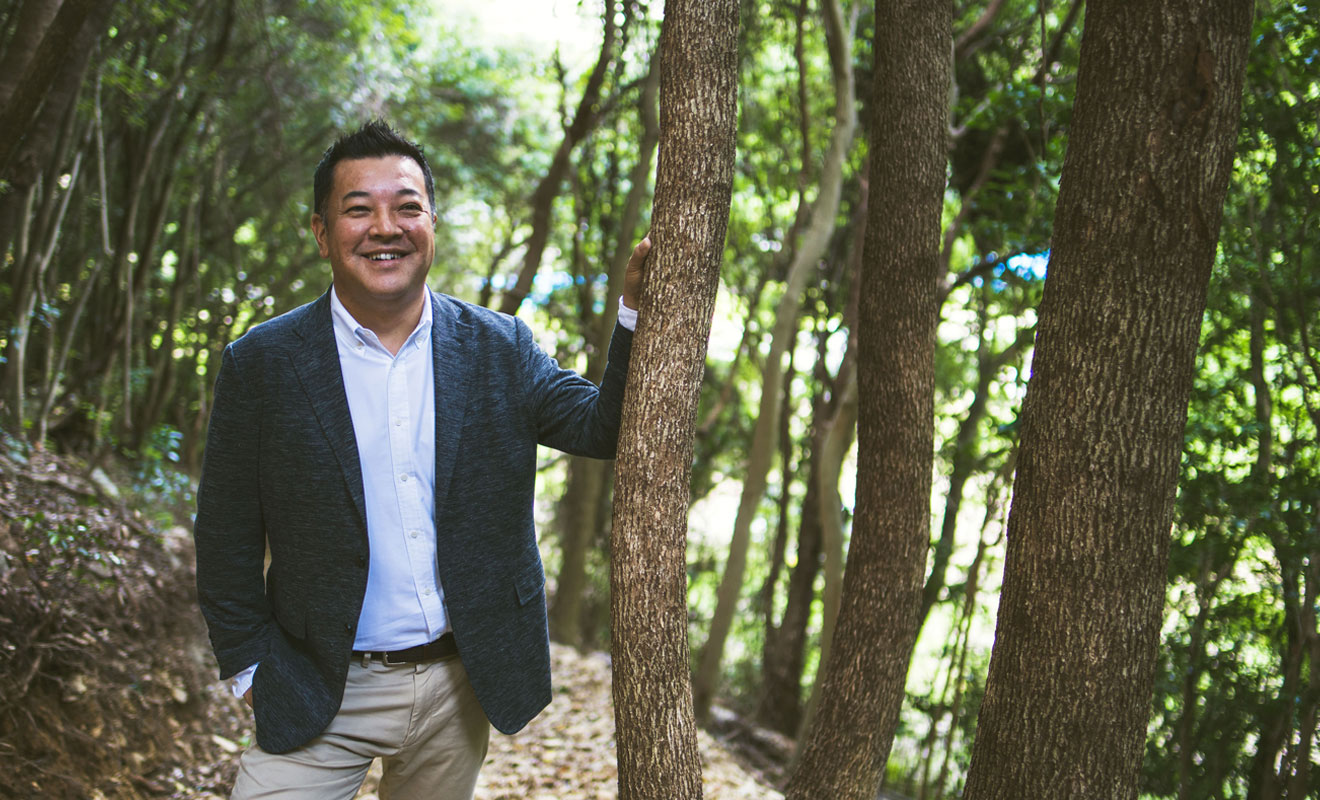PHILOSOPHY
In our country, where 70% of the land is covered by forests, with 30% being planted forests and 40% consisting of satoyama (secondary broadleaf forests), it can be said that forests and timber are our greatest resources. Pure air, water, landscapes, and the skills, culture, and history that have been centered around, connected by, and woven through the forests—all of these seem to be our true assets.
Since ancient times, the Japanese people have coexisted with forests, benefiting from their bounties. Although the form of this relationship has changed over time, we still need the blessings of the forests. At the same time, the forests, which have been shaped over countless years with human involvement, also require appropriate human engagement.
Tree Company Shikoku no Migishita, Ltd. is committed to creating a new relationship between people and forests here in the southeast of Shikoku, and establishing a new cyclical model of forest and human activities centered around the forests.We will inherit the philosophy of "Koriki forestry," developed by the pioneers of this region, and actively engage with the forests ourselves, creating new value in the trees and forests. Through our products and services, we will generate a "forest-related population," where many people become beneficiaries of the forests.
MESSAGE

The livelihood, the industry, the economy, as well as culture and history, are all centered around the forest.
CEO Motoharu Yoshida
After installing a wood stove in my home, I began to enter the forest to make firewood. Through this process, I touched the trees and learned about the trees, the forest, the mountains, and eventually, the entire region.
In the southeast of Shikoku, there is an abundance of evergreen broadleaf trees such as Ubame oak and Arakashi, which are prime materials for producing high-quality firewood and charcoal. The firewood and charcoal produced from these trees have long supported the lives of the people.
The pioneers established a forestry technique called "Koriki forestry," which involves selective logging (takubatsu) of trees at the appropriate age and utilizes the sprouting power of evergreen broadleaf trees that grow from the stumps after cutting. This technique was registered as a Forestry Heritage by the Japanese Forest Society in 2017.Koriki forestry created a highly economical, cyclical, and sustainable forest, which became a major supply source of firewood and charcoal fuel, supporting the energy needs of the Kansai metropolitan area.Even after several centuries, the grand autumn festival and the "Chosa" (taiko float), which are considered symbols of civic pride in the Hiwasa area, have their origins in the trade and cultural exchanges with the Kansai region through the firewood and charcoal industry.Livelihoods, industries, the economy, as well as culture and history, all revolved around the forests. The southeast of Shikoku has greatly benefited from the evergreen broadleaf forests.
The energy revolution, where wood fuel was replaced by fossil fuels. The fertilizer revolution brought about by the widespread use of chemical fertilizers. And the decline in market value of coniferous forests, which rapidly expanded after the war, due to trade liberalization.As a result of these changes, we began to distance ourselves from the forests, which had once been vital sources of resources. The forests, which had been so carefully cherished, lost their economic value, and people gradually ceased their involvement with them.
Abandoned and left like orphans, the forests have become saturated with trees, and beneath the lush greenery, various problems are emerging. In the southeast of Shikoku, as logging and forest management have ceased, trees have grown larger, leading to the spread of insect damage and fallen trees. The forests, which purify the air and water and sustain both people and the creatures of rivers and seas, are beginning to lose their ability to maintain this vital cycle.
For people to remain involved in the mountains, they need not only ideals and knowledge, but also economic motivation. Once again, we are committed to rebuilding a sustainable relationship between people and forests by creating value in forests for trees, thereby becoming an engine of demand for lumber. Please look forward to the challenge of Tree Company Shikoku no Migishita, Ltd.
OUTLINE
| Company Name | Tree Company Shikoku no Migishita, Ltd. |
|---|---|
| CEO | Motoharu Yoshida |
| Established | April 16, 2021 |
| Address | 54-5 Benzaiten, Okugawachi, Minami-cho, Kaifu-gun, Tokushima 779-2305, Japan |
| Capital | 67 million yen |